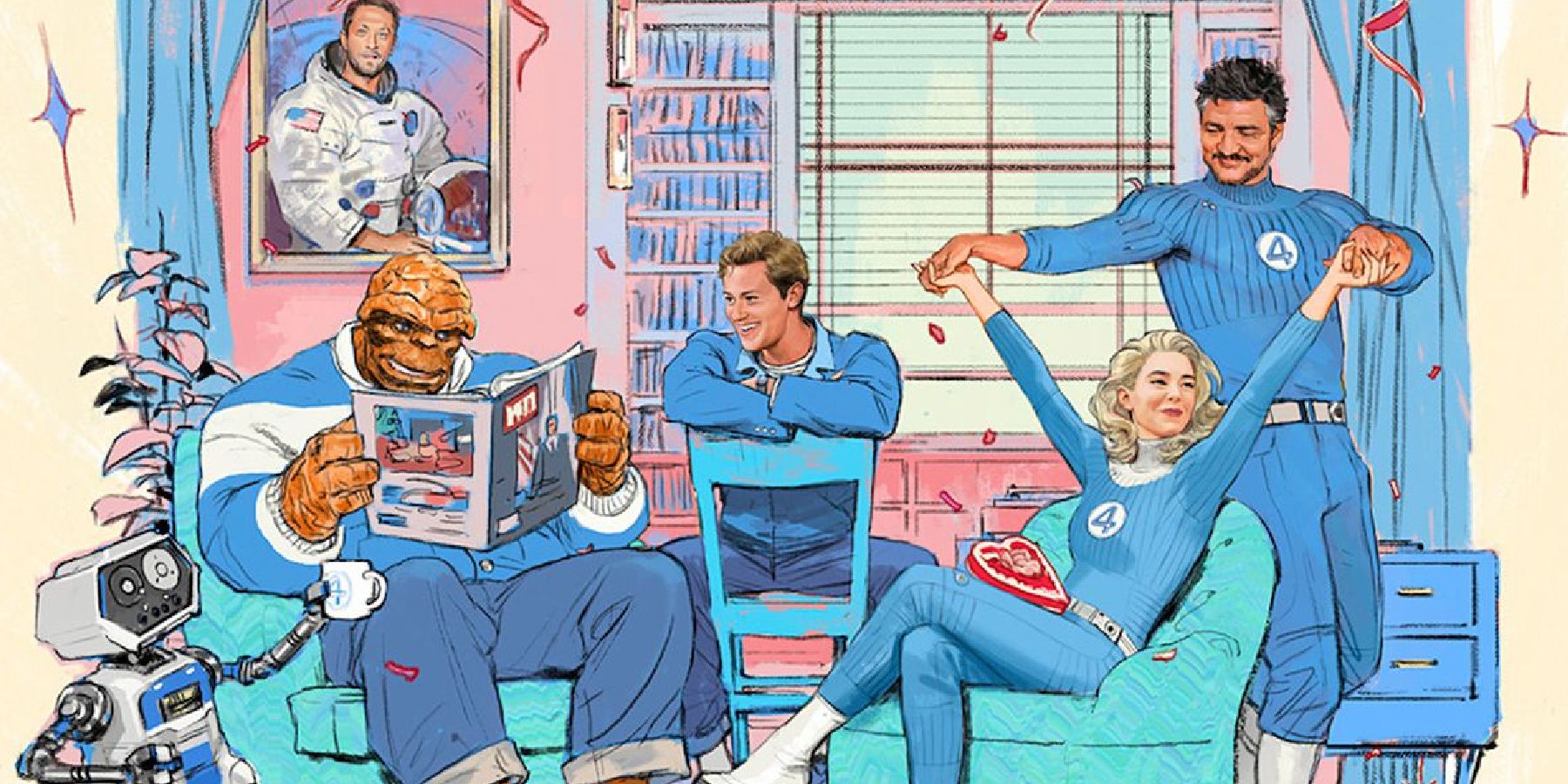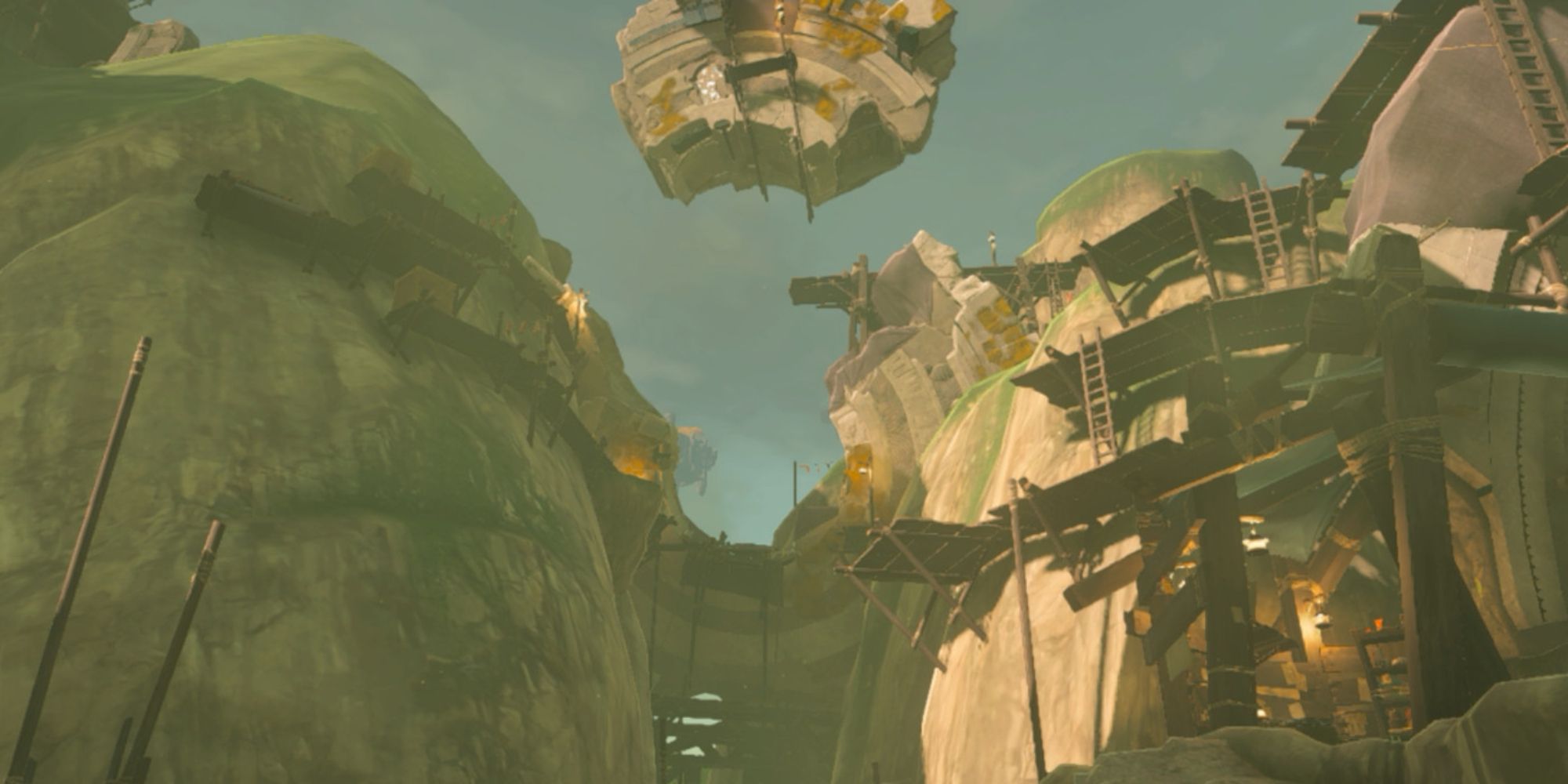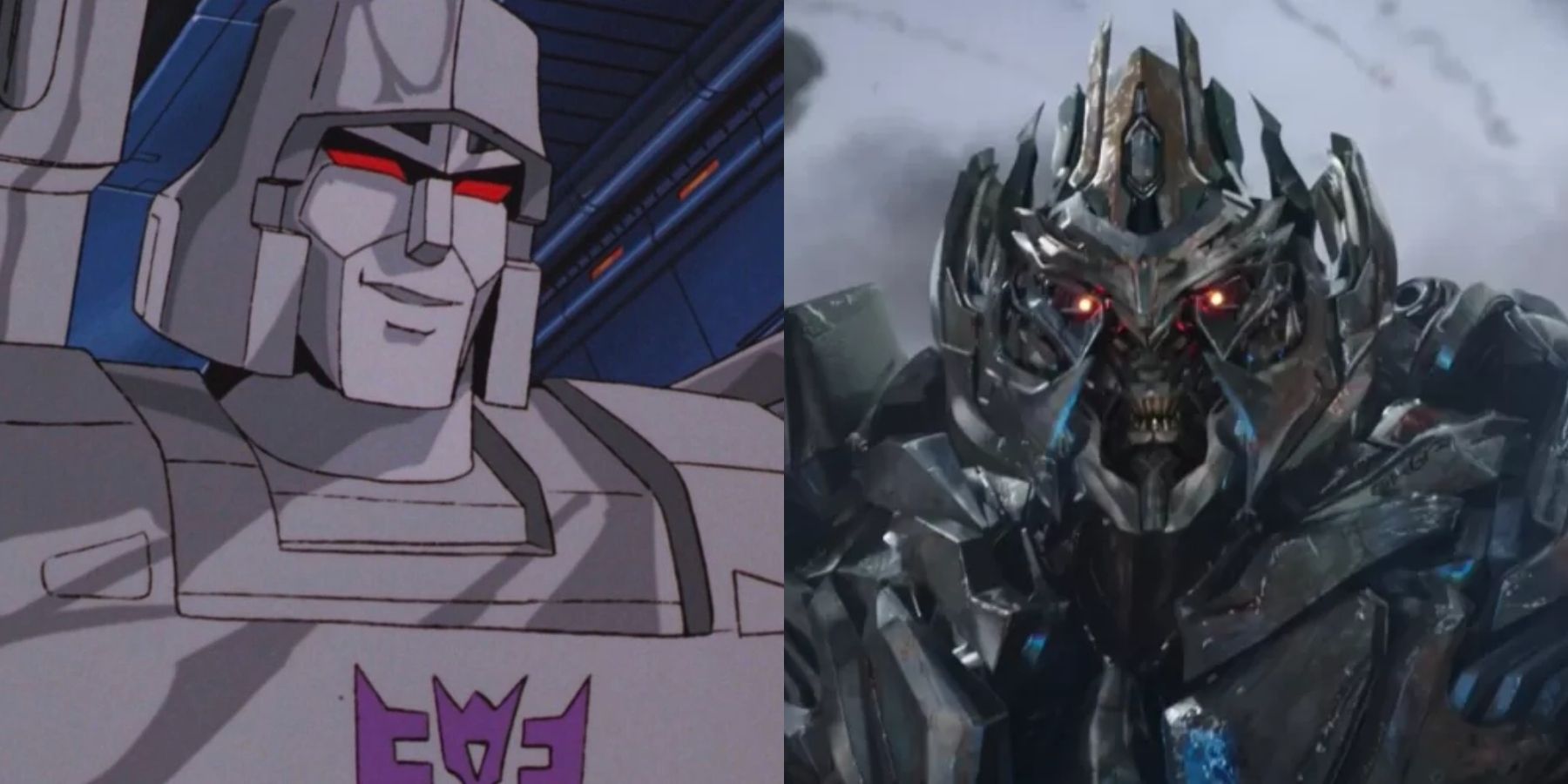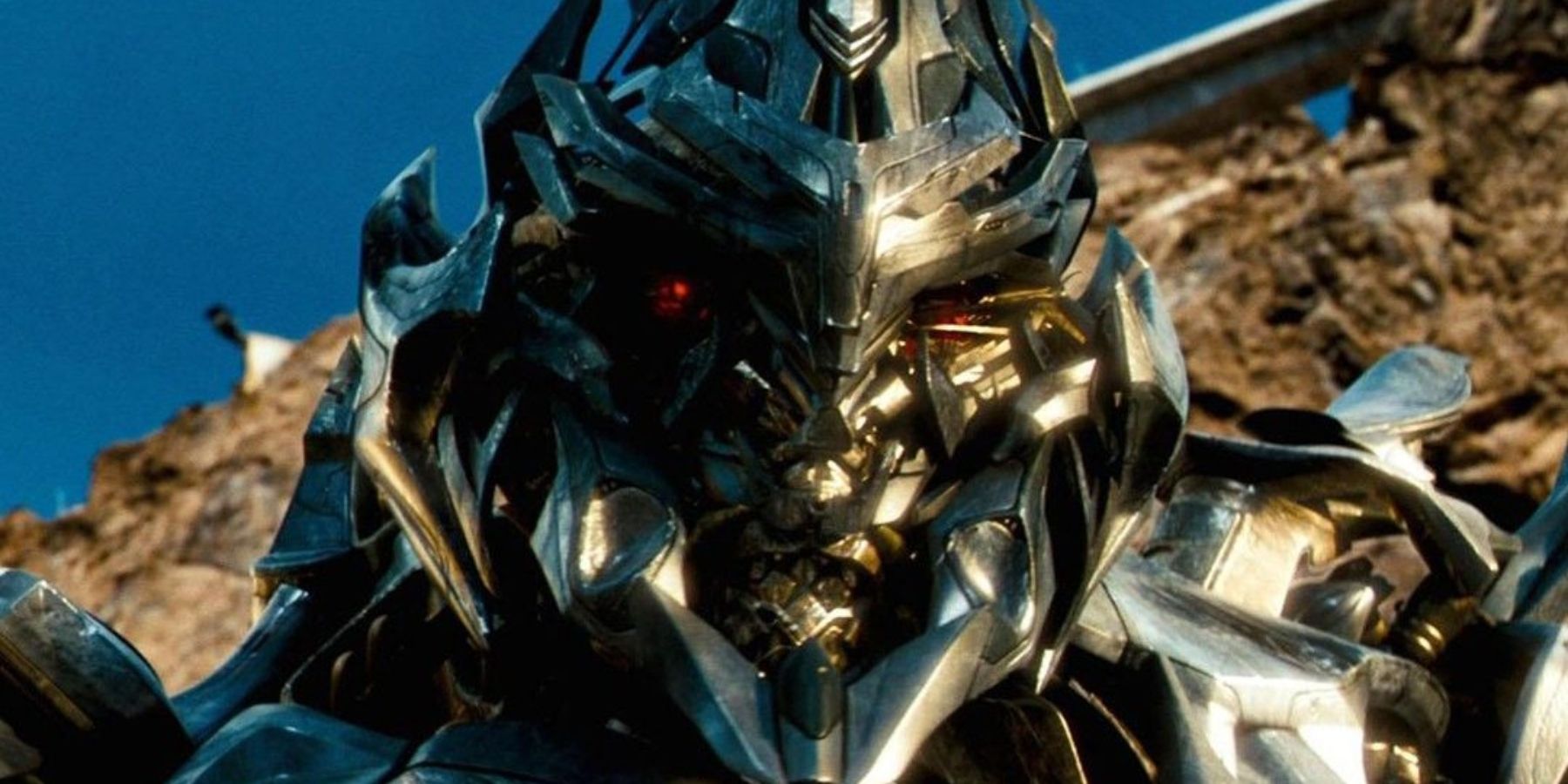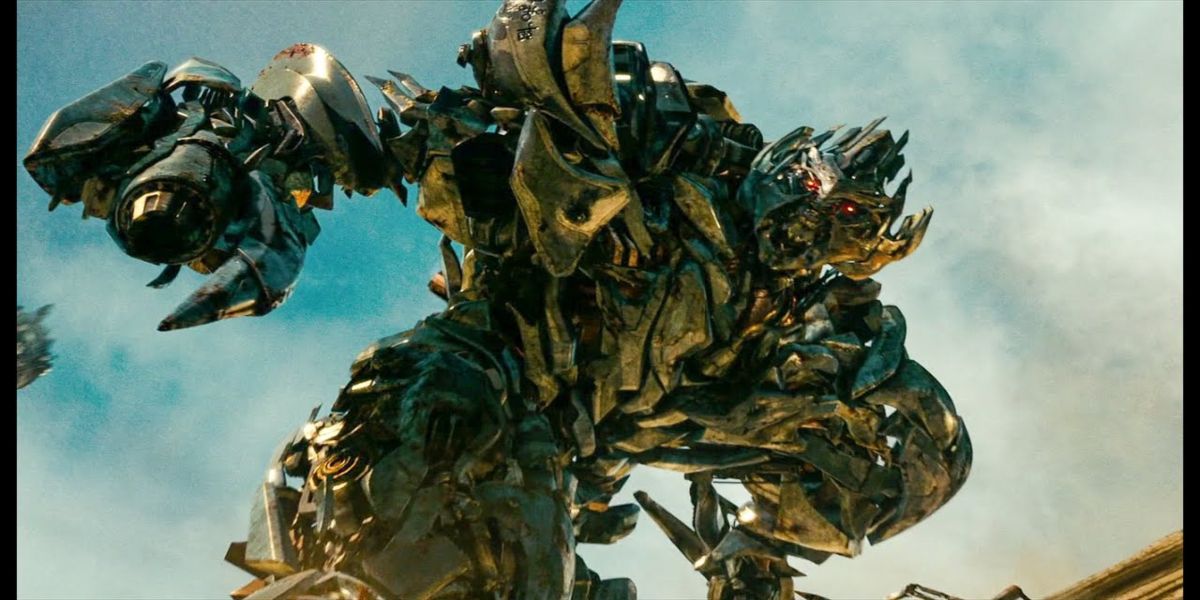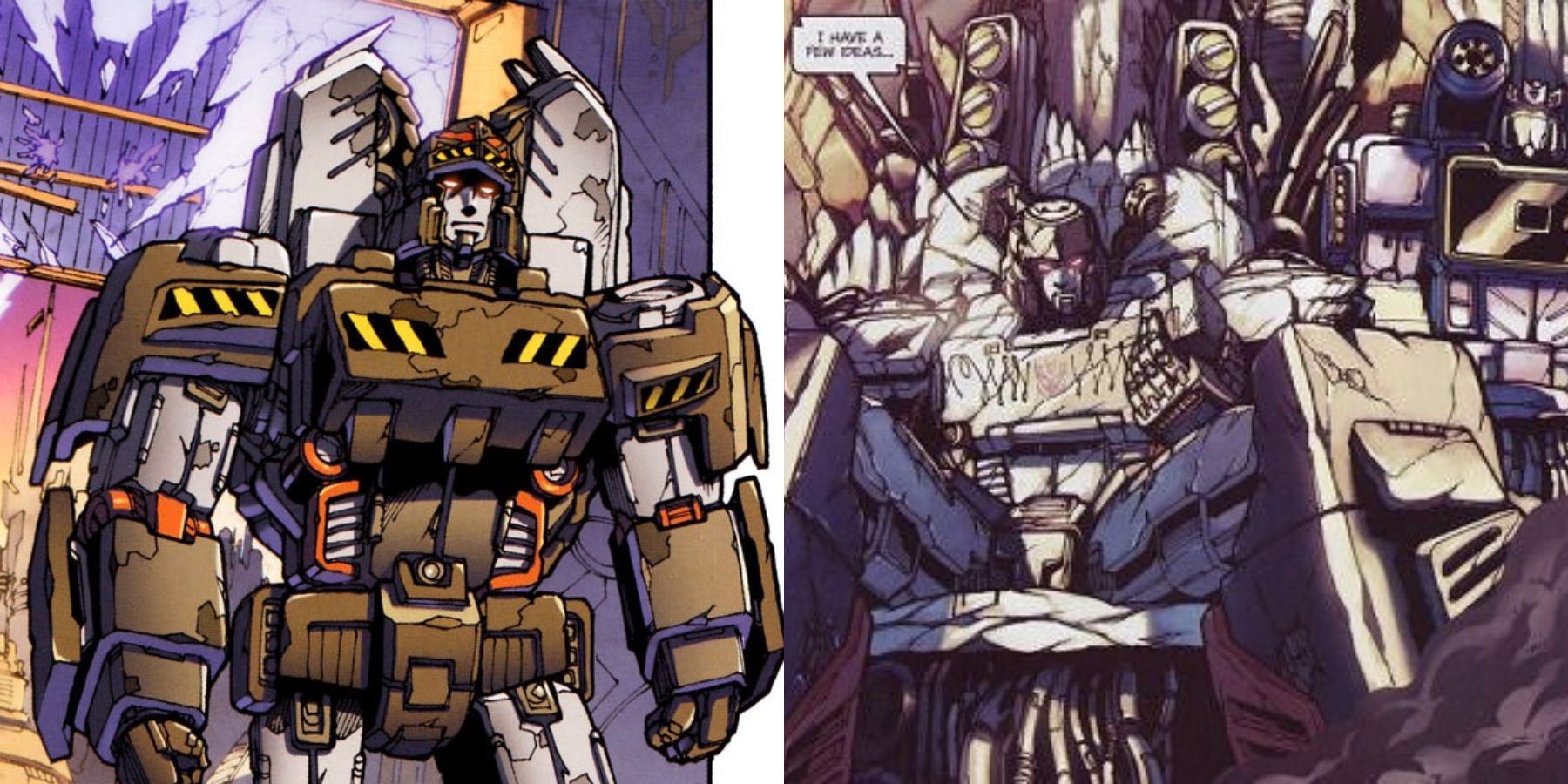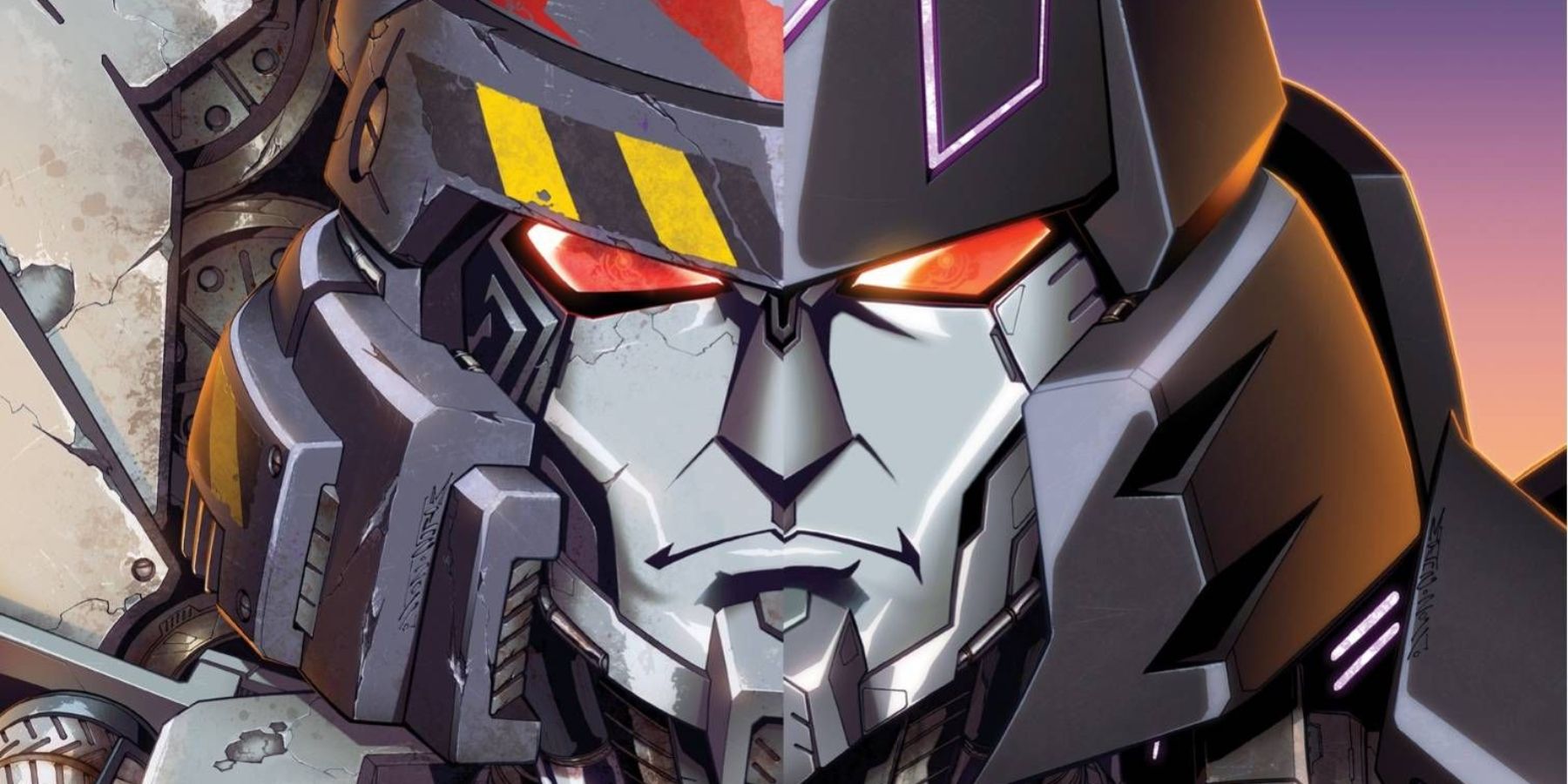There are many beloved Decepticons within the Transformers franchise, from the treacherous Starscream to the stoic Soundwave to the cold and calculating Shockwave. However, there is no Transformers villain quite so iconic as the leader of the Decepticons: the mighty mechanical megalomaniac known as Megatron.
Since 1984, Megatron has led the evil forces of the Decepticons in their war for universal domination — or as his original toy profile put it, “Peace through tyranny!” However, the exact reasons for Megatron’s insatiable hunger for power aren’t always clear. As such, it’s worth investigating why exactly Megatron turned to the side of villainy in the first place.
What Is Megatron’s Motivation?
Despite his toy bio’s stated goal of “peace through tyranny,” the Megatron of the original 1980s cartoon doesn’t seem very concerned with peace at all. Rather, he’s characterized as seeking power and conquest for their own sake, with no loftier ideals driving his endless ambition. In other words, he’s a typical cartoon villain. Later iterations of the character, such as in the Beast Wars animated series or the Armada anime, portrayed him in largely the same way: pure evil, with no real nuance to his goals. So predictably, Megatron’s live action debut was no different.
The 2007 Transformers movie, directed by Michael Bay, depicts Megatron as a vicious warlord bent on conquering all worlds with the power of the AllSpark Cube. Optimus Prime’s narration states that Megatron’s desire for the AllSpark led to the war between the Autobots and Decepticons, which ravaged their home planet of Cybertron. It’s never explained why Megatron became so obsessed with commanding the Cube’s vast power. But curiously, the film indicates that Megatron wasn’t always evil.
Optimus explains that Megatron betrayed the Autobots when he began the war — a choice of words that implies that Megatron was once allied with Optimus. This implication is only strengthened later in the film, when Optimus calls Megatron “brother” after his death at the hands of Sam Witwicky. While the two arch-rivals are never portrayed as actual siblings, it’s all but stated that Megatron once shared a close bond with Optimus before his lust for power made them mortal enemies. However, it’s unclear why Megatron betrayed Optimus, or where his ambitions of conquest came from. It’s possible that he was led astray by the influence of the Fallen, but the details of their relationship are never explained.
Still, there’s one aspect of Megatron’s movie characterization that hints at some level of nuance: his obsession with saving his home. Time and again, Megatron’s schemes involve some artifact or another that has the power to restore Cybertron to its former glory. And while it was Megatron’s warmongering that drove Cybertron to ruin to begin with, there’s something interesting about the fact that Megatron seems to earnestly wish for his homeworld to prosper — even if it’s as the seat of an intergalactic empire. Of course, the movies never explore the finer details of Megatron’s motivations any further. However, the same can’t be said for every Transformers adaptation.
Why Did Megatron Form the Decepticons?
Most Transformers continuities never bother explaining how Megatron became the leader of the Decepticons in the first place. That was the case in the 80s cartoon, and it was likewise the case in the live action movies. But in 2007, the Transformers comics from IDW Publishing finally delved into the beginnings of the Decepticons with the aptly-named miniseries Megatron: Origin. Years later, writer James Roberts would build upon this backstory even further in the pages of More than Meets the Eye, creating a definitive history for both Megatron and the Decepticons.
In the comics, Megatron began life as a lowly miner from the Cybertronian city of Tarn. He harbored dreams of being a medic, but due to the strict caste system enforced by Cybertron’s corrupt Senate, he was forced to live by the function of his vehicle mode. Filled with bitterness towards the oppressive establishment, Megatron began writing political treatises calling for pacifistic defiance against the status quo.
Megatron’s writing gained popularity, and the Senate sought to silence him before these seeds of dissent could grow any further. The crooked cop Whirl was ordered to kill Megatron, but he was saved by none other than Orion Pax — the bot who would later become Optimus Prime. Enraged by his brush with death, Megatron became disillusioned with his former pacifist ideals. Now, he was convinced that only power and force could achieve change.
Later, Megatron won notoriety as a gladiator in the underground fighting pits of Kaon, and used his newfound influence to amass a loyal legion of criminals and outcasts. This movement eventually gained the name “Decepticons”, after their slogan “You are being deceived.” Once Megatron had gathered enough followers, the Decepticons began a string of brutal terrorist attacks all across Cybertron.
Before long, Megatron and the Decepticons slaughtered the entire Senate, even killing the Autobot leader Sentinel Prime. But while Cybertron was finally free from the Senate’s control, Megatron wasn’t satisfied. He believed that in order to truly save Cybertron, he needed to rule it. In Megatron’s eyes, the only lasting peace was peace through tyranny. And so, the war between the Autobots and Decepticons began.
This origin for the Decepticons as a revolutionary movement turned into an authoritarian regime would later be adopted by other Transformers adaptations, including the Prime and Cyberverse animated shows. Not only does it give the story a more gritty, political edge, it also provides some nuance to what had previously been a faction of generic cartoon villains. Megatron’s new origin as a hero who lost his way turns him into a tragic, multifaceted character — and of course, it provides a compelling explanation for why he turned evil in the first place.

